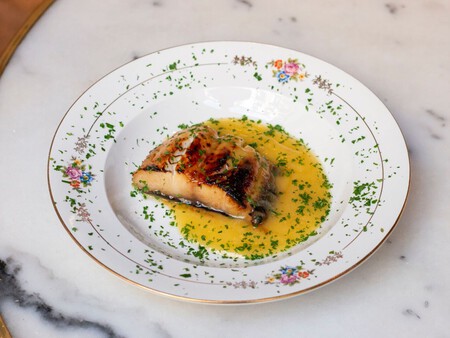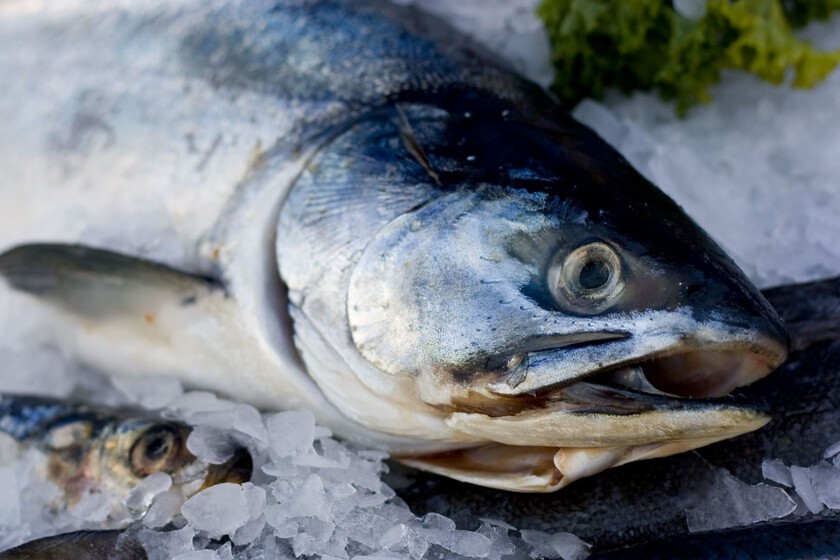In Spain it is known as black cod, but it is not a type of cod, so it should not be confused with skrei either. Unlike these, which belong to the order Gadiformes, the black cod is a family of marine fish of the suborder anoplopomatoidei within the order Scorpaeniformes. Less widespread, it does have great economic importance in countries like Japan or United Statesand it is a white fish considered exquisite.
As is often the case with the world of fish, the disparity in names given to this saltwater animal does not help to reduce confusion with its peers. Nor does it get easier if we go to English; English speakers call it saber, black codebut also butterfish, blue code, bluefish, coal code either candlefishamong others.
US regulations only allow it to be labeled as saberfish for commercial purposes, and that is why we can also find it translated into our language as sablefish. However, at our markets, sablefish are another variety of fish. I said, a little mess of names which is clarified by mentioning its scientific name, Fimbria anoplopomaor in Japanese, gindara“silver”.
Description and characteristics
Black cod is an animal very long-lived capable of exceeding 70 years, having reached the record of a specimen located with 94, despite the fact that they are usually captured at an age of around 20 and 30 years.
Of variable size, depending on the area, the largest are usually located in the waters of Alaska, being able to measure more than a meter in length and exceed 20 kilos. In general, the pieces captured for consumption are in a range of about 70cm longrarely weighing more than four or five kilos in weight.
of body remarkably elongate, compressed, tapered head with two lateral nostrils, lacks ridges or spines on head, and has small, sharp teeth. Its scales are small and also cover the head and part of the fins, of which it has two dorsals and two dorsals in the thoracic area, near the gills.

In addition to being long-lived, it is very voracious, feeding on any fish that comes its way, as well as molluscs, with a certain predilection for squid, and even jellyfish.
Habitat and fishing grounds
The origin of the anoplomatoidei dates back to the Miocene epoch, about 25 million years ago, and inhabits very deep water north of Pacific Ocean, northwest, northeast and central-east. The largest catches are made in Alaska and Japanin whose economies it plays a fundamental role, being also highly valued gastronomically in the Asian country.

It is caught on the high seas by pots and traps ground level underwater trawl nets and also fishing lines and hooks, in a more limited and handmade way. In Alaska fishing is very controlled to comply with sustainability regulations.
This fish spawns towards the end of winter or early spring, in deep water, but larvae rise to shallower water after hatching. During their rapid growth, the fry remain in areas closer to shore before returning out to sea when they reach maturity.
Sablefish are caught and commercially distributed practically throughout the year. In Alaska, specifically, the fishing season is extended from March to Novemberapproximately.
Nutritional properties and benefits
Although not considered a blue fish, black cod is a fish semifatty very interesting nutritionally. With about 190-197 kcal per 100 g of edible portion, it is rich healthy fatty acidsproteins of high biological value and also vitamins and minerals.

It stands out for its contribution of Omega 3, group B vitamins, vitamin A, magnesium, selenium and phosphorus, also being a source of calcium, iron and potassium. Its consumption is also a source of hydration for the body, and it is quite a satiating fish.
Among its benefits is therefore the contribution of high-quality complete proteins and healthy fats, with healthy effects on the cardiovascular system, the proper functioning of the nervous system and the maintenance and development of bones, muscles and teeth. It is perfectly suitable for balanced and slimming diets.

Regarding the possible content in mercuryis found in average terms, its consumption within a balanced diet not being especially dangerous, adults being able to take up to a weekly ration, limiting children to two per month.
How to cook and use it in the kitchen
Due to its higher fat content than cod, gintara or black cod has a more pronounced flavor, with a texture juicier and a longer stay on the palate. When trying it for the first time, unique nuances are clearly perceived that differ from common or skrei cod, without being very salty but with that marine touch, more fine and balanced.

It stands out especially for the texture of its meat, firm but tender and honeyed, almost pearly or silky thanks to the natural fats, and also separates easily into flakes. It is not usually used directly raw, not even in Japan, as it offers more possibilities when grilled, grilled, baked or over hot coals, marking the outside well and leaving the skin crispy.
Another very frequent technique that chefs usually use with this fish is maceration; they are doing very well umami more japanese and asian: miso, rice vinegar, sake, soy sauce, teriyaki sauce or mirin are ingredients that do not fail. Brown sugar or honey is often added for a sweet touch. caramelizedand it also works with itchy spots.
The skins are rich in collagen and make it possible to prepare a kind of pil-pil to accompany the fish that has been grilled or grilled. Whether dehydrates previously leaving it in salt to extract the maximum of water, you can make an excellent tempura, or simply batter it as if it were hake for a crispy fry.

In general, the flavors acidic, somewhat salty and slightly spicy They do very well, making good friends with citrus, chili, sesame, fermented or truffle. A simple way to prepare it is to marinate it with soy sauce, miso and grated ginger, and cook it on the grill or on the barbecue. Another good idea is to smoke it.
Stews, stews, soups and stews, however, they don’t lend themselves so much to take advantage of this fish, but we could add it to a rice towards the end of cooking after marking it on the griddle at high temperature.

Cook a Fish: The new way to cook and enjoy fish from head to tail (Kitchen T)
Photos | Shinsuke Ikegame – Ian G Taylor – Yuya Tamai – Alaska Seafood – Mike McCune – chef jancris – Gillfoto
In DAP | The best cod recipes
In DAP | Cod’s poor cousin is called stoker, and it tastes great: how to make the most of this versatile and cheap fish


